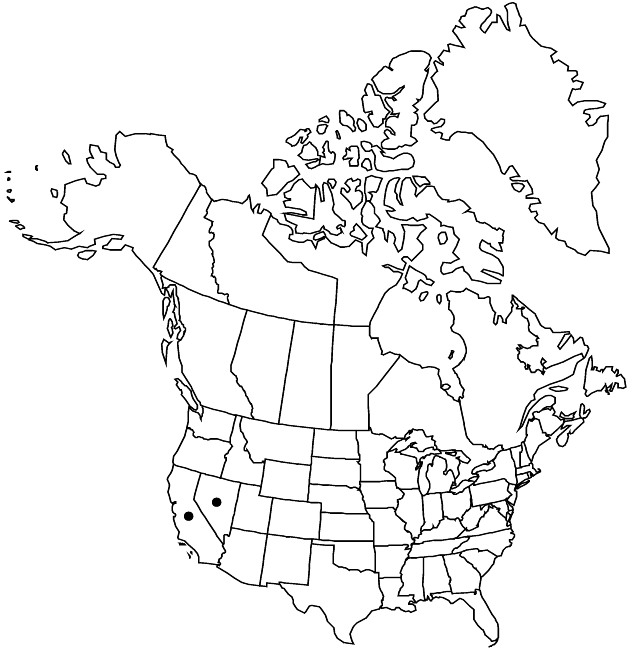Malacothrix floccifera
Contr. U.S. Natl. Herb. 22: 656. 1924.
Annuals, 10–40 cm. Stems 1–8, simple or branched proximally and/or distally, glabrous or proximally puberulent. Cauline leaves: proximal oblanceolate to obovate, usually pinnately lobed (lobes 4–6+ pairs, ± equal, apices obtuse), ± fleshy, ultimate margins dentate, abaxial faces usually white-arachnose (usually in patches on lobes); distal reduced (pinnately lobed or dentate proximally, lobes obtuse). Calyculi of 3–8+, ovate to lanceolate bractlets, hyaline margins 0.1–0.3 mm wide. Involucres campanulate, 5–7 (–9) × 2.5–4 (–5) mm. Phyllaries 13–21+ in 2–3 series, oblong or lanceolate to linear, hyaline margins 0.05–0.2 mm wide, faces glabrous. Receptacles bristly. Florets 21–60; corollas white or yellow (usually with abaxial lavender stripes), 7–15 mm; outer ligules exserted 5–9 mm. Cypselae ± cylindric to prismatic, 1.2–2 mm, ribs extending to apices, 5 more prominent than others; persistent pappi 0. Pollen 70–100% 3-porate. 2n = 14.
Phenology: Flowering Mar–Nov.
Habitat: Burns, slides, road cuts, open areas, usually in loose soil (serpentine, gypsum, or brown-clay) in chaparral, pinyon/juniper woodlands, yellow-pine forests
Elevation: 60–2000 m
Discussion
Malacothrix floccifera grows in the Transverse Ranges in Ventura County, in the Coast Ranges to Siskiyou County, on foothills and slopes of Sierra Nevada from Lassen County to Fresno County, and in western Nevada, near Lake Tahoe.
Selected References
None.
Lower Taxa
"fine" is not a number."]" is not declared as a valid unit of measurement for this property.
